Mapping local and regional health tasks by country
Healthcare is an essential public service and its provision has undergone substantial changes in recent years. Decision-making in healthcare often tends to be the prerogative of central governments, given their role in ensuring that health services are delivered efficiently and equitably across territories. Nonetheless, decentralisation is also a fundamental characteristic of many healthcare systems, given the key role played byLRGswith respect to the inputs and outputs from the health sector, not to mention their capacity to closely monitor actual delivery of healthcare services.
The next section of this study analyses local and regional governments’ powers and responsibilities specifically in the field of health, using primary data shared by CEMR’s members. This data provides an in-depth look at LRGs’ responsibilities which, due to the differing structures of health systems across Europe, vary enormously from country to country. What’s more, the current reality of the COVID-19 pandemic has made it possible to gain important insights, through the experiences of regional and local governments, into how an unparalleled health emergency is being managed across Europe.
This analysis includes a review of local competences relating to health care, including details regarding a number of health tasks and whether they fall under the planning and /or implementation level. Recent reforms and trends in the domain of health and their implications for local powers and finances are discussed as well.
Mapping local and regional health tasks by country
The public health sector varies widely across Europe and includes the management of a vast array of individual services. The aim of this part of the study is not only to look more closely at what public health provision means in concrete terms at the local and regional tier, but also to gain insight into the individual functions, responsibilities and tasks ofLRGsin the health domain.
Box 3 is a list of 21 functions which might fall under the remit and responsibilities of LRGs.[1] To determine this, CEMR’s members were asked to state, with respect to each function, whether the local and regional tier was responsible for taking decisions only regarding its planning, only regarding its implementation, for both its planning and implementation or whether the situation was more complex.
Box 3: List of 21 healthcare tasks
|
To identify the nature and importance of the role played byLRGswith respect to health functions, we have sorted these tasks according to how often they were mentioned in the responses provided to CEMR’s questionnaire.
From our analysis of the data,LRGsdo exercise significant powers and responsibilities with regard to both the planning and implementation of 7 of the 21 key functions. Topping the list is the provision of social welfare services (function #7). In fact, in 25 countries,[2] providing these services is the responsibility of the local or regional governments.
General health promotion and prevention service (#10) was the next most frequently cited function.LRGshold powers and responsibilities for the planning and implementation of these services in 19 countries.LRGsalso play a prominent role in the provision of nursing care, care for the elderly and the provision of care homes (function #14), both at the planning and implementation level. Other important functions at the subnational level include the planning and implementation of school health services (function #11), primary care (function #5), and youth health care (function #13).
Although we have seen thatLRGsare actively responsible for both the planning and implementation of these functions, there are other areas where the importance of their role revolves more around implementation (service provision), whereas the planning is entrusted to the central government. Examples of such functions include the provision, maintenance, and management of health centres and the administration of COVID-19 vaccinations. In certain countries, with other functions, the reverse is true, withLRGssolely being in charge of the planning phase. Examples include the cases of Austria (recruitment of health personnel), Bulgaria (COVID-19 vaccination centres), Czech Republic (palliative care, which is primarily the responsibility of regions and non-profit organisations), Serbia (maternity and child healthcare) and Slovenia (managing healthcare facilities/provision of health centres). With respect to the latter, Slovenian municipalities set up health centres (zdravstveni dom), provide infrastructure, and have representatives on these entities’ boards/councils but are not involved in their day-to-day operations.
In France,LRGsare responsible for managing healthcare facilities (function #4). The French Association of the Council of European Municipalities and Regions (AFCCRE) viewed this as a means forLRGsto tackle concerns such as the potential shortage of medical care in rural areas and in suburbs. In these cases,LRGshave leeway to provide financial support to encourage doctors to set up their practices in these areas or to support the construction of multidisciplinary medical facilities and public health centres.
The data showed that, in five countries,[3] none of the 21 health functions identified fell within LRGs' remit of responsibilities. Moreover, there are some functions that are rarely implemented or planned at the LRG level, and even some that are never entrusted toLRGsat any stage. This essentially concerns the licensing and monitoring of the medicines market (function #8), secondary care and specialist treatment (function #6), medical screenings (function #17) and pharmaceutical care (function #20).
A quantification of the functions polled is given in Table 2. The table clearly shows that decision-making powers for a large number of health functions remain firmly in the hands of the central government in many respondent countries.
The table also highlights the fact that a large proportion of CEMR’s countries implement less than a dozen functions.
Table 2 – Exercise of responsibilities for the 21 health functions byLRGsat the planning and implementation level
Source: TERRI Survey 2021 | CEMR
[1] For more information on the 21 functions, please refer to the Methodology
[2] Austria, Belgium, Czech Republic, Denmark, Estonia, Finland, Germany, Hungary, Italy, Kosovo, Latvia, Lithuania, Luxembourg, Netherlands, Norway, Poland, Portugal, Romania, Serbia, Slovakia, Slovenia, Sweden, Turkey, Ukraine, United Kingdom (WLGA – Wales)
[3] Albania, Israel, Moldova, Montenegro, North Macedonia. There was no response for Bosnia and Herzegovina and Greece.
